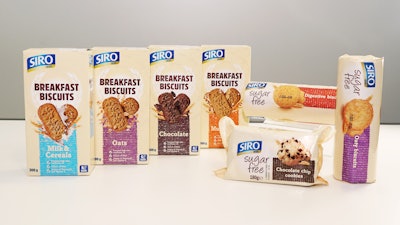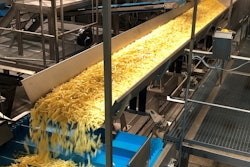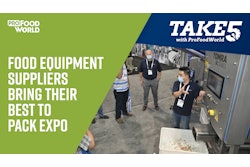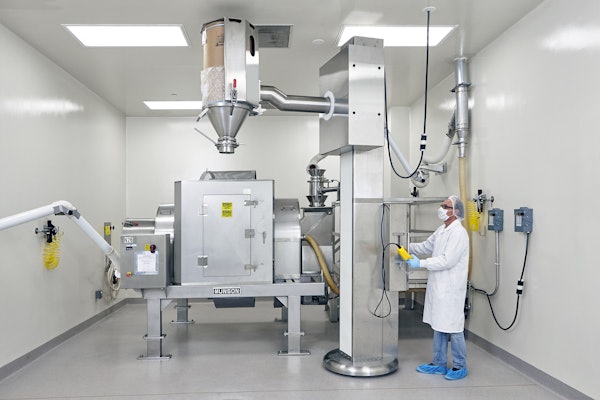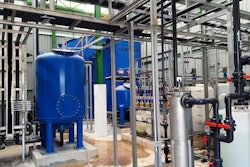Cerealto Siro Foods, based in Madrid, makes cookies, breakfast cereals, snacks, pasta, and other cereal-based food products at plants in Spain, the UK, Italy, Portugal, and Mexico. At its plant in Tepeji, Mexico, the company undertook a project to automate ingredient handling on its four biscuit production lines. The goal was to guarantee accurate weighing of key ingredients such as flour and sugar; eliminate foreign matter; and reduce safety risks among workers, particularly lower back pain caused by handling large bags of ingredients.
With help from Radar Process, Cerealto Siro has been able to achieve all of these goals. “Thanks to the implementation of the automated handling of ingredients, we can guarantee greater operator safety—as well as an improvement in the workforce’s general wellbeing—by reducing arduous or uncomfortable work. It also allows us to have an accurate inventory control, reliable weighing, and dosing with a margin of error of less than 1%,” says Sergio Barreto, engineering manager for Cerealto Siro’s Tepeji plant. “Thanks to the careful monitoring of the process, we have eliminated the risks of foreign matter appearing in the dough.”
Previously, this was an entirely manual process. Workers poured up to 220 kg of flour and sugar—in 40 kg bags or sacks—into each of the four kneaders at a rate of two batches per hour for each kneader. “This process led to a large amount of physical work, injuries, significant quantity errors, safety risks from foreign matter entering the dough, and a significant need for low-skilled labor involved in the process,” Barreto says.
Improved food safety
The change in process has not only taken a huge physical burden off the workers, but it has contributed considerably to improved food safety. With the new system, the main ingredients are dispensed within a closed system—coming from 75-ton silos that are automatically fed from tanker trucks.
“These ingredients are not exposed to the environment or any type of handling at any time, and go through different processes, including sieving, filtering, and the retention of ferrous elements using magnetic detectors,” Barreto explains. “Spills are largely avoided, as the ingredients are handled in closed pipes as part of a pneumatic conveying process.”
If there is a food safety concern caused by defects in an ingredient, the Radar Process software identifies the issue in a timely and precise manner. “In the event of a contingency, it identifies the batches to be retained with just one click on the traceability system,” Barreto says.
Any recipe modifications from one batch to the next are carried out automatically based on predefined recipes that the operator can change with a single click. The automatic dosing system also offers significant benefits in inventory control. “It is very quick and easy to obtain consumption data and view it either all together, by recipe, by customer, by ingredient, or via any other method of analysis that you wish to carry out,” Barreto notes. “The silos containing the main raw materials rest on load cells that provide us with the stock in each one at all times.”
Implementation and operation challenges
Despite the project’s benefits, it did not come without challenges. It involved a significant change to the line layout, and it was not easy to keep production running during transition, Barreto notes. “Modifying the feeding of the mixers while continuing to knead as part of production was not an easy task, and the process had to be organized very well,” he says. “The project stakeholders were fully involved in the implementation of the new system, which facilitated decision-making and the correct implementation of the project. Technical support from Radar Process was always available from receipt of equipment to start-up.”
 | Calling all food and beverage plant innovators! Submissions for the 2022 Manufacturing Innovation Awards are due Jan. 17, 2022. Learn about entry requirements. |
It was also a big change for operations and maintenance staff, who had a difficult time adapting to the change. “The combination of a new system and the operators’ limited experience and training led to repeated damage to key parts within a short space of time,” Barreto says. “It was very important to have spare parts for the initial phases.”
Ultimately, the new system has proven to be robust, Barreto adds. “We wanted a reliable, sustainable system that would fulfill our initial objectives, and that has been achieved.”
